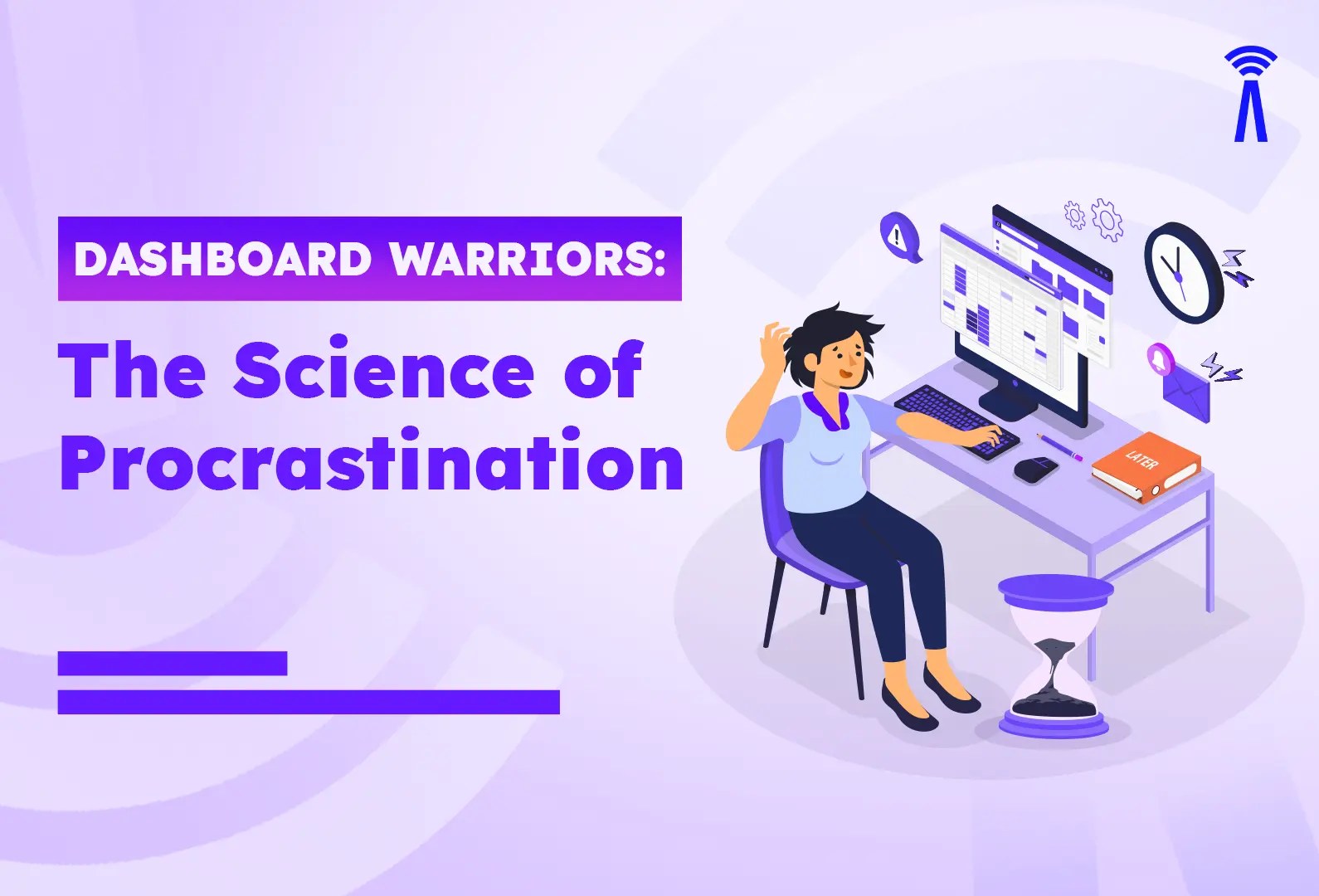We are talking about a different kind of procrastination. One that many might not identify as procrastination but it is holding the sales leaders back from performing their most important tasks. And you guessed it right, it has to do with dashboards and data.
Here are the 2 topics this week:
- Dashboard Warriors: The Science of Procrastination
- The Global Inconsistency of Sales One-on-Ones
Dashboard Warriors: The Science of Procrastination
The shift to virtual work environments during the pandemic has created a unique challenge for frontline sales managers. Reliant on Zoom calls and spreadsheets, some have become “dashboard warriors,” managing their teams by indicators like opportunities created and pipeline coverage.
This shift of culture, while seemingly productive, masks a bigger issue: a lack of coaching. Sales managers are falling victim to a form of procrastination, prioritizing tasks that trigger the pleasure center in the brain (like manipulating data in spreadsheets) over the more challenging, but crucial, act of coaching.
Effective coaching requires utilizing the prefrontal cortex, responsible for planning and decision-making. However, this area of the brain is less developed than the limbic system (pleasure center). This biological reason makes procrastination through data manipulation all the more tempting.
However, the consequences of neglecting coaching are significant. Think of sales success as a three-legged stool: volume (number of leads), velocity (deal speed), and probability (conversion rate). While manipulating data might create a false sense of progress on one or two legs, neglecting coaching weakens the entire foundation of your sales team.
So, how do we break this cycle of procrastination? Sales leaders need to prioritize the “hard things” – activities like ride-alongs and coaching calls. These activities, while mentally taxing, are essential for developing skills and increasing win rates.
This isn’t just theory. Let me share a personal story from my time as a salesperson. I had this CEO who kept on creating financial models and manipulating data, neglecting to provide crucial coaching to us. As we were not learning anything from him, my colleague and I eventually left the company to form our own consulting firm, driven by the lack of leadership and development opportunities.
The takeaway? Don’t let dashboards become your 1st priority. Prioritize coaching to equip your sales team with the skills they need to succeed. By focusing on the “hard things,” you’ll build a high-performing team that drives real, sustainable growth.
The Global Inconsistency of Sales One-on-Ones
When I had my sales training company, “Sales for Life,” we worked with major enterprises like Microsoft, Intel, Oracle, and SAP. We saw hundreds of sales managers with varying approaches to coaching their teams.
Here’s the key takeaway: 80% of sales leaders lacked a consistent one-on-one model.
The lucky 20% followed a structured approach with weekly meetings, agendas, documented coaching, and follow-up. But the majority? Their meetings were all over the map:
- Frequency: Monthly, quarterly, or even nonexistent.
- Duration: From 15-minute pipeline reviews to hour-long dives.
- Focus: Rarely on skill development or knowledge transfer. Often, it became a “diagonal diagnostic” of the pipeline, focusing on specific deals instead of long-term growth.
This inconsistency is a missed opportunity. Because effective sales coaching should be about transferring knowledge and developing new skills. It’s not just about pushing deals through the pipeline.
Our Solution: The 10-Minute Coaching Moment
We developed the “10-Minute Coaching Moment” to address this gap. Here’s the core idea:
- Focus on one skill per week: Identify a specific skill and focus on building it through stories, role-playing, and scenario planning.
- Active learning: Sales reps implement the new skill in the field and then return to demonstrate their progress.
- Consistency is key: Regular, focused coaching fosters steady growth and skill development.
The Challenge: Implementation
While the 10-Minute Coaching Moment offers a solution, implementing it consistently can be a hurdle. Our experience shows that even with training, 80% of sales leaders struggle to maintain consistent coaching habits.
The Bottom Line:
Standardizing the sales coaching process is critical for sales team success. The 10-Minute Coaching Moment offers a framework, but addressing implementation challenges remains an opportunity for further innovation.
FREE RESOURCE – Activity & Pipeline Gap Calculator
Does each of your sellers know the exact number of conversations they will need to have next month to highly influence Pipeline Creation?
Have they accounted for the headwinds and tailwinds?
- Leads from Marketing
- Leads from the BDR team
- Leads from Channel Partners
What is their ‘Self-Sourcing’ GAP?
How many opportunities do they need to self-source?
How many conversations will be required to create enough opportunities to win?


